Clayton
Clayton is the “sister town” of Deer Park, about 5.2 miles to the north. The village was founded in 1889 and named after nearby clay deposits. The Washington Brick Company was established in 1893. She, along with most of the small town, was lost in a catastrophic fire in 1908, but was rebuilt and the new Washington Brick, Lime, and Sewer Pipe company became famous for its high-quality products, including beautiful decorative terracotta panels, which were largely crafted by skilled craftsmen who had migrated to Washington from northern Italy.
x
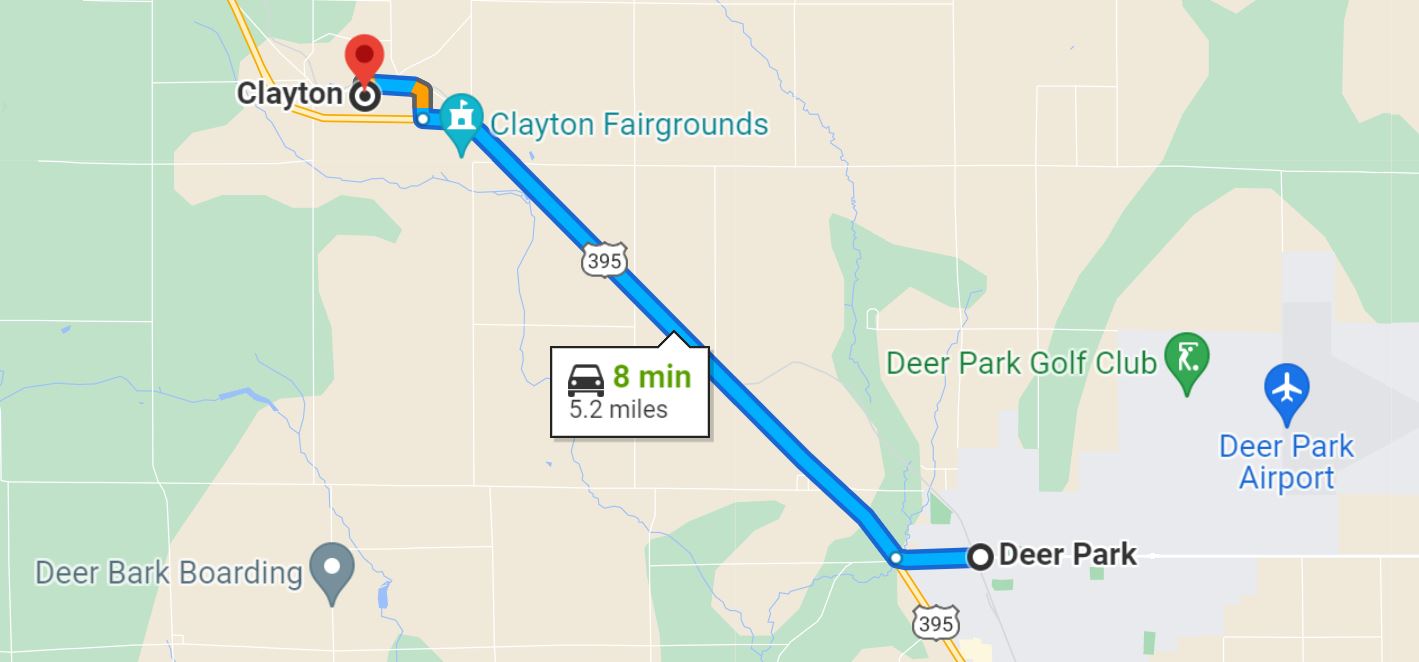
x
Clayton according to the census for the 2010 census, has a population of 443 inhabitants. The average annual household income is about $32,000. The average annual temperature is about 47°F, which is about 7°F lower than the average temperature across the United States. The average age of residents is 28, 9 years younger than the U.S. average.
When the grounds where the rodeo arena was located in Deer Park were populated with residential buildings, the rodeo passed to the town of Clayton. In the summer of 1967, I went through the experience of competing in the Deer Park rodeo, riding two locking horses.
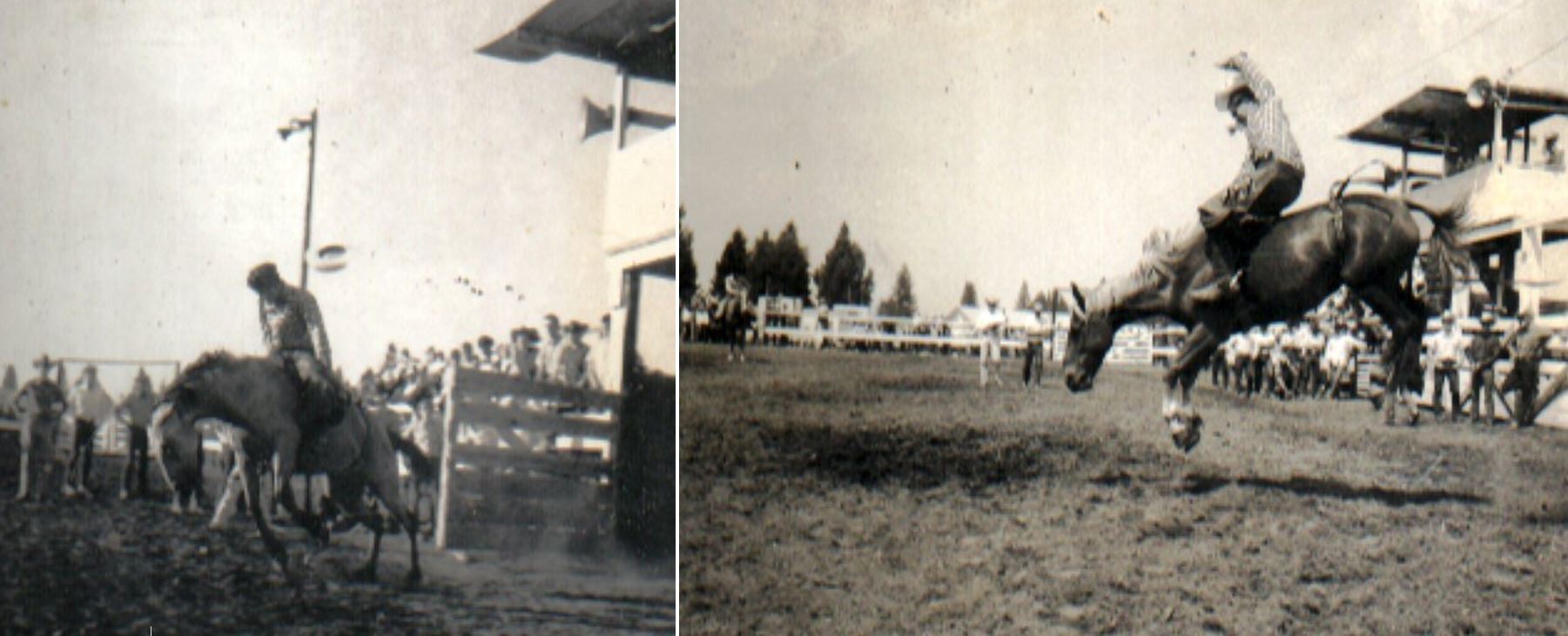
Clayton es el “pueblo-hermano” de Deer Park, unas a 5.8 millas al norte. El pueblo fue fundado en 1889 y nombrado por los depósitos de arcilla cercanos. La Washington Brick Company se estableció en 1893. Ella, junto con la mayor parte del pequeño pueblo, se perdió en un incendio catastrófico en 1908, pero se reconstruyó y la nueva compañía Washington Brick, Lime, and Sewer Pipe se hizo famosa por sus productos de alta calidad, incluidos hermosos paneles decorativos de terracota, que fueron elaborados en gran parte por artesanos expertos que habían emigrado a Washington desde el norte de Italia.
Clayton según el censo para el censo de 2010, tiene una población de 443 habitantes. El ingreso familiar anual promedio es de aproximadamente $ 32,000. La temperatura media anual es de aproximadamente 47 ° F, que es aproximadamente 7 ° F más baja que la temperatura promedio en todo Estados Unidos. La edad promedio de los residentes es de 28 años, 9 años más joven que el promedio de Estados Unidos.
Cuando los terrenos donde estaba ubicado la arena de rodeo en Deer Park fue poblada con edificios de viviendas, el rodeo pasó al pueblo de Clayton. En el verano de 1967 pasé por la experiencia de competir en el rodeo de Deer Park, montando sendos caballos cerreros.
Davie Rodeo
The Clayton rodeo was one of the six disappointments we suffered on our trip to Deer Park. It would be unfair to compare the rodeo of that small town of less than 500 inhabitants with that of Davie in Florida, which is considered one of the best in the United States, with the city of Davie in the middle of a conglomerate of more than 8 million inhabitants and with one of the highest rates of tourism in the country. However, Clayton’s rodeo left much to be desired. The vast majority of participants in the different categories did not meet the objective of completing the competitions. We decided to leave the venue halfway through the event, totally and absolutely disappointed.
El rodeo de Clayton fue una de las seis decepciones que sufrimos en nuestro viaje a Deer Park. Sería injusto comparar el rodeo de ese pequeño pueblo de menos de 500 habitantes con el de Davie en Florida, el cual está considerado uno de los mejores de Estados Unidos, estándo la ciudad de Davie en el medio de un conglomerado de más de 8 millones de habitantes y con uno de los mayores índices de turismo del país. Sin embargo, el rodeo de Clayton dejó mucho que desear. La inmensa mayoría de los participantes en las diferentes categorías, no cumplieron con el objetivo de completar las competencias. Decidimos abandonar el lugar a la mitad del evento, total y absolutuamente deceepcionados.
The Bergeron Rodeo Grounds were founded in the early 1940s. They are located in the historical western theme downtown district of Davie, Florida. They serve as Davie’s main tourist attraction. This indoor/outdoor facility has been building and establishing itself as one of the up-and-coming multi-cultural locales in South Florida. Originally the center was established as a rodeo arena, but as the need for a more versatile activity increased, the arena expanded to meet the demands for such diverse events as top name concert entertainers and family events that include circus, monster trucks, horse shows, dog shows, car shows, air boat shows, specialty shows and industrial shows.
Events
x
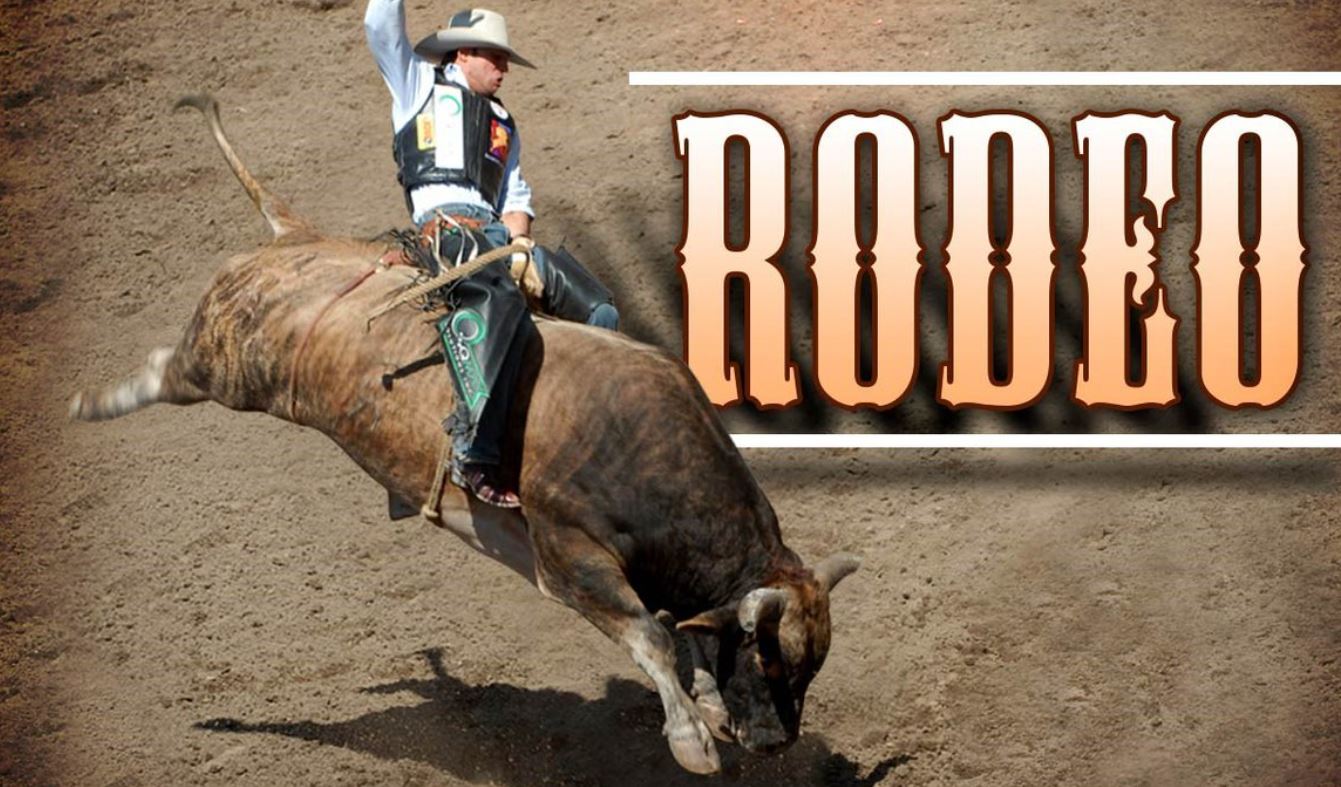
x
Los rodeos profesionales en Estados Unidos y Canadá generalmente incorporan eventos cronometrados y eventos rudos, más comúnmente el enlace de terneros, enlace en equipo, lucha de novillos, “domas” de broncos empleando e sillas de montar y “domas” de caballos cerrreros (broncos) a pelo, monta de toros y carreras de barriles.
Roping
Roping competitions are based on the tasks of a working cowboy, who often had to capture calves and adult cattle for branding, medical treatment and other purposes. The cowboy must throw a type of rope with a loop, known as a lariat, riata or reata, or lasso, over the head of a calf or onto the horns and around the hind legs of adult cattle, and secure the animal in a fashion dictated by its size and age.
x
x
Las competencias de enlaces (“roping”) se basan en las tareas de un vaquero que trabaja, que a menudo tenía que capturar terneros y ganado adulto para la marca, el tratamiento médico y otros fines. El vaquero debe lanzar un tipo de cuerda con un lazo, conocido en inglés como “lariat”, riata o reata, o lazo, sobre la cabeza de un ternero o sobre los cuernos y alrededor de las patas traseras del ganado adulto, y asegurar al animal de acuerdo a su tamaño y edad.
x
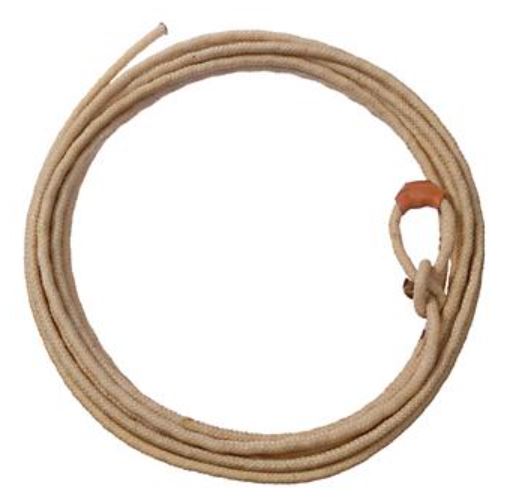
X
Larriat
x
- Calf roping, also called tie-down roping, is based on ranch work in which calves are roped for branding, medical treatment, or other purposes. It is the oldest of rodeo’s timed events. The cowboy ropes a running calf around the neck with a lariat, and his horse stops and sets back on the rope while the cowboy dismounts, runs to the calf, throws it to the ground and ties three feet together. (If the calf falls when roped, the cowboy must lose time waiting for the calf to get back to its feet so that the cowboy can do the work.) The job of the horse is to hold the calf steady on the rope. A well-trained calf-roping horse will slowly back up while the cowboy ties the calf, to help keep the lariat snug. Calf roping, also known as tie-down roping, is a rodeo event that features a calf and a rider mounted on a horse. The goal of this timed event is for the rider to catch the calf by throwing a loop of rope from a lariat around its neck, dismount from the horse, run to the calf, and restrain it by tying three legs together, in as short a time as possible. A variant on the sport, with fewer animal welfare controversies, is breakaway roping, where the calf is roped, but not tied. The event derives from the duties of actual working cowboys, which often required catching and restraining calves for branding or medical treatment. Ranch hands took pride in the speed with which they could rope and tie calves which soon turned their work into informal contests. The event is recognized by most rodeo organizations, including the Professional Rodeo Cowboys Association (PRCA) and the International Professional Rodeo Association. In the United States, there are two organizations that promote calf roping alone: the United States Calf Ropers Association (USCRA) and Ultimate Calf Roping (UCR). Other timed rodeo events that use cattle include breakaway roping, where the rider ropes but does not throw the calf; steer wrestling; and team roping, which uses adult cattle. In PRCA events, the calf must weigh between 220 and 280 pounds. Calves must be strong and healthy; sick or injured livestock cannot be used. According to the PRCA, “Most calves do not compete more than a few dozen times in their lives because of weight and usage restrictions and the fact that calves grow so rapidly.”
- x
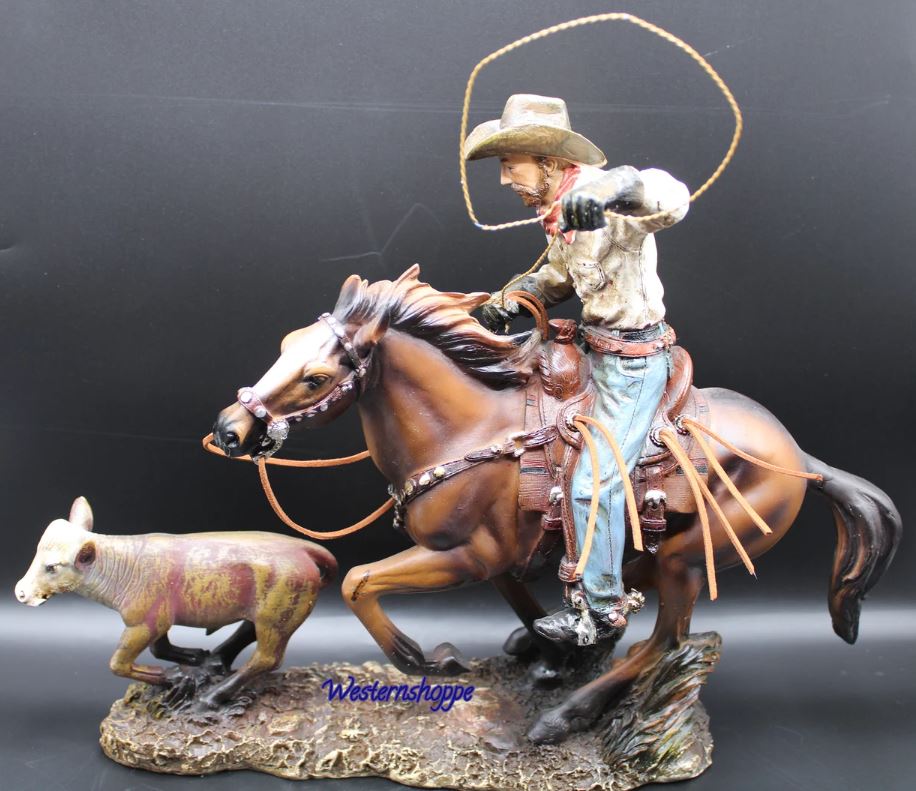
x
- El enlace de terneros (“calf roping”), también llamado enlace de amarre (breakaway roping), se basa en el trabajo de rancho en el que los terneros son atados para la marca, el tratamiento médico u otros fines. Es el más antiguo de los eventos cronometrados del rodeo. El vaquero enlaza alrededor del cuello a un ternero en movimiento con un “lariat” y su caballo se detiene y estira la cuerda mientras el vaquero se desmonta, corre hacia el ternero, lo tira al suelo y ata tres pies juntos. (Si el ternero se cae cuando está atado, el vaquero debe perder tiempo esperando que el ternero vuelva a ponerse de pie para que el vaquero pueda cumplir el objetivo). El trabajo del caballo es mantener al ternero firme en la cuerda. Un caballo bien entrenado estirará la cuerda lentamente mientras el vaquero ata al ternero, para ayudar a mantener el “lariat” ajustado. Una variante en el deporte, con menos controversias en cuanto al bienestar físico del animal, es el enlace de ruptura, donde el ternero no atado. El evento se deriva de los deberes de los vaqueros que trabajan realmente, que a menudo requerían atrapar y restringir a los terneros para la marca o el tratamiento médico. Los vaqueros del rancho se enorgullecían de la velocidad con la que podían enlazar y atar a los terneros, lo que pronto convirtió su trabajo en concursos informales. El evento es reconocido por la mayoría de las organizaciones de rodeo, incluyendo la Asociación de Vaqueros de Rodeo Profesional (PRCA) y la Asociación Internacional de Rodeo Profesional. En Estados Unidos hay dos organizaciones que promueven el enlace de terneros solamente: la Asociación de Enlazadores de Terneros de Estados Unidos (USCRA) y Ultimate Calf Roping (UCR). Otros eventos de rodeo cronometrados que usan ganado incluyen el enlace de ruptura, donde el jinete enlaza pero no arroja al ternero; lucha libre de novillos; y el roping en equipo, que utiliza ganado adulto. En los eventos de PRCA, el ternero debe pesar entre 220 y 280 libras. Los terneros deben ser fuertes y sanos; el ganado enfermo o herido no puede ser utilizado. Según la PRCA, “la mayoría de los terneros no compiten más de unas pocas docenas de veces en sus vidas debido a las restricciones de peso y al hecho de que los terneros crecen rápidamente”.
x
- Breakaway roping is a form of calf roping where a very short lariat is used, tied lightly to the saddle horn with string and a flag. When the calf is roped about the neck, the horse stops, the flagged rope breaks free of the saddle, and the calf runs on without being thrown or tied. In most of the United States, this event is primarily for women of all ages and boys under 12. In places where traditional “tie-down” calf roping is not allowed, riders of both genders compete.
- El enlace de ruptura es una forma de enlace de pantorrilla donde se usa un “lariat” muy corto, atado ligeramente al cuerno de la silla de montar con cuerda y una bandera. Cuando el ternero está atado alrededor del cuello, el caballo se detiene, la cuerda marcada se libera de la silla de montar y el ternero corre sin ser arrojado o atado. En la mayor parte de los Estados Unidos, este evento es principalmente para mujeres de todas las edades y niños menores de 12 años. En lugares donde no se permite el tradicional “amarre” de terneros, compiten jinetes de ambos sexos.
- x

x
- Breakaway roping is a variation of calf roping where a calf is roped, but not thrown and tied. It is a rodeo event that features a calf and one mounted rider. The calves are moved one at a time through narrow runs leading to a chute with spring-loaded doors. The horse and rider wait in a box next to the chute that has a spring-loaded rope, known as the barrier, stretched in front. A light rope is fastened from the chute to the calf’s neck, releasing once the calf is well away from the chute and releasing the barrier, which is used to ensure that the calf gets a head start. Once the barrier has released, the horse runs out of the box while the roper attempts to throw a lasso around the neck of the calf.
- El enlace de ruptura es una variación del enlace de ternero, donde un ternero está atado, pero no arrojado y atado de patas. Es un evento de rodeo que cuenta con un ternero y un jinete montado. Los terneros se mueven de uno en uno a través de recorridos estrechos que conducen a un conducto con puertas con resorte. El caballo y el jinete esperan en una caja junto al tobogán que tiene una cuerda cargada por resorte, conocida como la barrera, estirada en el frente. Una cuerda ligera se sujeta desde el conducto hasta el cuello del ternero, liberándose una vez que el ternero está bien lejos del conducto y liberando la barrera, que se utiliza para garantizar que el ternero obtenga una ventaja. Una vez que la barrera se ha liberado, el caballo sale corriendo de la caja mientras el vaquero intenta lanzar un lazo alrededor del cuello. x
Once the rope is around the calf’s neck, the roper signals the horse to stop suddenly. The rope is tied to the saddle horn with a string. When the calf hits the end of the rope, the rope is pulled tight and the string breaks. The breaking of the string marks the end of the run. The rope usually has a small white flag at the end that makes the moment the rope breaks more easily seen by the timer. The fastest run wins.
- Una vez que la cuerda está alrededor del cuello del ternero, el vaquero le indica al caballo que se detenga repentinamente. La cuerda está atada al cuerno de la silla de montar. Cuando la pantorrilla golpea el extremo de la cuerda, la cuerda se tensa y la cuerda se rompe. La ruptura de la cuerda marca el final de la carrera. La cuerda generalmente tiene una pequeña bandera blanca en el extremo que hace que el momento en que la cuerda se rompa sea más fácil de ver por el temporizador. El vaquero que logre el menor tiempo: gana.
- Breakaway roping is usually seen in junior, high school, college, semi-professional, and professional rodeos. At the collegiate, semi-professional, and professional level, it is exclusively a women’s event, but at lower levels competitors can be both male and female. Some amateur rodeos also have breakaway roping as part of their event line-up. It is also used as a substitute for calf roping in some parts of Europe, where traditional calf roping, also called tie-down roping, is banned.
- x
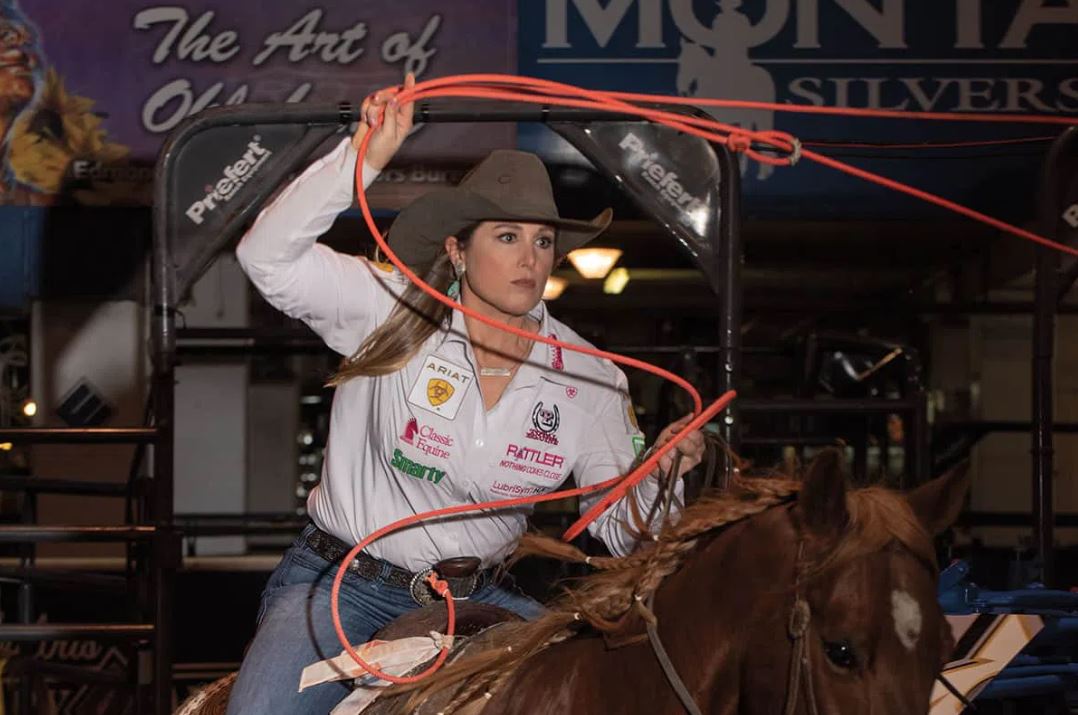
x
Jackie Crawford – Breakaway Roping World Champion
x
- El enlace de ruptura generalmente se ve en rodeos juveniles, de secundaria, universitarios, semiprofesionales y profesionales. A nivel universitario, semiprofesional y profesional, es exclusivamente un evento femenino, pero en niveles inferiores los competidores pueden ser tanto masculinos como femeninos. Algunos rodeos amateurs también tienen enlace de ruptura como parte de su alineación de eventos. También se utiliza como sustituto del enlace de terneros en algunas partes de Europa, donde el enlace tradicional de terneros, también llamado enlace de amarre, está prohibido.
- In 2019, the Professional Rodeo Cowboys Association (PRCA) started including Women’s Professional Rodeo Association (WPRA) sanctioned breakaway roping at some of their events, making it along with the standard WPRA barrel racing the two rodeo events for women. Since 2020, the year-end National Finals Breakaway Roping (NFBR) has been held to determine the WPRA World Champion breakaway roper. This event is held in conjunction with the PRCA’s National Finals Rodeo (NFR).
x
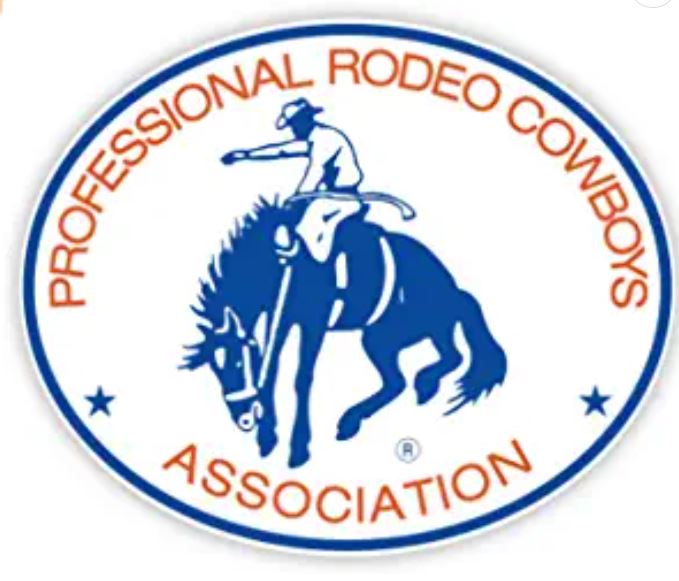
- x
- En 2019, la Asociación de Vaqueros de Rodeo Profesional (PRCA) comenzó a incluir a la Asociación de Rodeo Profesional Femenino (WPRA) sancionada por el enlace de ruptura en algunos de sus eventos, convirtiéndolo junto con la carrera de barriles estándar de WPRA en los dos eventos de rodeo para mujeres. Desde 2020, las Finales Nacionales de Fin de Año Breakaway Roping (NFBR) se han celebrado para determinar el subcampeón del mundo de la WPRA. Este evento se lleva a cabo en conjunto con las Finales Nacionales de Rodeo (NFR) de la PRCA.
- Team roping, also called “heading and heeling,” is the only rodeo event where men and women riders compete together. Two people capture and restrain a full-grown steer. One horse and rider, the “header,” lassos a running steer’s horns, while the other horse and rider, the “heeler,” lassos the steer’s two hind legs. Once the animal is captured, the riders face each other and lightly pull the steer between them, so that both ropes are taut. This technique originated from methods of capture and restraint for treatment used on a ran. Team roping also known as heading and heeling is a rodeo event that features a steer (typically a Corriente) and two mounted riders. The first roper is referred to as the “header”, the person who ropes the front of the steer, usually around the horns, but it is also legal for the rope to go around the neck or go around one horn and the nose resulting in what they call a “half head”. Once the steer is caught by one of the three legal head catches, the header must dally (wrap the rope around the rubber covered saddle horn) and use his horse to turn the steer to the left. The second roper is the “heeler”, who ropes the steer by its hind feet after the “header” has turned the steer, with a five-second penalty assessed to the end time if only one leg is caught. Team roping is the only rodeo event where men and women compete equally together in professionally sanctioned competition, in both single-gender or mixed-gender teams. Cowboys originally developed this technique on working ranches when it was necessary to capture and restrain a full-grown animal that was too large to handle by a single man. Over the years, as the sport has grown, a numbering system was added to rate each ropers individual talent level. The numbers go from one to ten (1-10) for headers and one to ten (1-10) for heelers. Using these numbers, a handicap system (the subtraction of time) has been developed to even the competition. Today there are tens of thousands of amateur ropers who compete for millions of dollars in prize money. A successful professional-level team takes between 4 and 8 seconds to stretch the steer, depending on the length of the arena. At lower levels, a team may take longer, particularly if the heeler misses the first throw and has to try again. At higher levels, the header and the heeler are allowed only one throw each, if either miss, the team gets no score.
x
- El enlace en equipos, también llamado “rumbo y tacón” (“heading and heeling” en inglés), es el único evento de rodeo donde los jinetes masculinos y femeninos compiten juntos. Dos personas capturan y retienen a un novillo adulto. Un vaquero enlaza los cuernos de un novillo que corre, mientras que el otro caballo y vaquero, el “heeler”, enlaza las dos patas traseras del animal. Una vez que el animal es doblemente enlazado, los jinetes se enfrentan entre sí y tiran ligeramente del novillo entre ellos, de modo que ambas cuerdas estén tensas. Esta técnica se originó a partir de los métodos de enlace y contención para el tratamiento utilizados en una carrera. El enlace en equipos, también conocido como “rumbo y tacón”, es un evento de rodeo que cuenta con un novillo (típicamente un Corriente) y dos jinetes montados. El primer vaquero se conoce como el “cabezal”, la persona que ata la parte delantera del novillo, generalmente alrededor de los cuernos, pero también es legal que la cuerda vaya alrededor del cuello, o que gire alrededor de un cuerno y la nariz, lo que resulta en lo que llaman una “media cabeza”. Una vez que el novillo es atrapado por una de las tres capturas legales de la cabeza, el cabezal debe usar su caballo para girar el novillo hacia la izquierda. El segundo vaquero es el “heeler”, que ata al novillo por sus patas traseras después de que el cabezal haya girado el novillo, con una penalización de cinco segundos evaluada hasta el tiempo final si solo se atrapa una pierna. El roping por equipos es el único evento de rodeo donde hombres y mujeres compiten por igual en competencias sancionadas profesionalmente, tanto en equipos de un solo género como de género mixto. Los vaqueros originalmente desarrollaron esta técnica en ranchos de trabajo cuando era necesario capturar y restringir a un animal adulto que era demasiado grande para ser manejado por un solo hombre. A lo largo de los años, a medida que el deporte ha crecido, se agregó un sistema de numeración para calificar el nivel de talento individual de cada vaquero. Los números van del uno al diez (1-10) para los cabezales y del uno al diez (1-10) para los heelers. Usando estos números, se ha desarrollado un sistema de hándicap (la resta de tiempo) para igualar la competencia. Hoy en día hay decenas de miles de vaqueros aficionados que compiten por millones de dólares en premios. Un equipo exitoso de nivel profesional tarda entre 4 y 8 segundos en estirar el novillo, dependiendo de la longitud de la arena. En niveles más bajos, un equipo puede tardar más tiempo, especialmente si el heeler falla el primer lanzamiento y tiene que intentarlo de nuevo. En los niveles más altos, el cabezal y el heeler solo pueden efectuar un lanzamiento cada uno, si alguno falla, el equipo no obtiene puntuación.
Other timed events
- Barrel racing is a timed speed and agility event. In barrel racing, horse and rider gallop around a cloverleaf pattern of barrels, making agile turns without knocking the barrels over. In professional, collegiate and high school rodeo, barrel racing is an exclusively women’s sport, though men and boys occasionally compete at local O-Mok-See competition. It requires a combination of the horse’s athletic ability and the horsemanship skills of a rider in order to safely and successfully maneuver the horse around three barrels placed in a triangle pattern within a large arena.
x
- Las carreras de barriles son un evento cronometrado de velocidad y agilidad. En las carreras de barriles, el caballo y el jinete galopan alrededor de un patrón de hojas de trébol de barriles, haciendo giros ágiles sin derribar los barriles. En el rodeo profesional, universitario y de secundaria, las carreras de barriles son un deporte exclusivamente femenino, aunque hombres y niños ocasionalmente compiten en la competencia local O-Mok-See. Requiere una combinación de la habilidad atlética del caballo y las habilidades de equitación de un jinete para maniobrar con seguridad y éxito el caballo alrededor de tres barriles colocados en un patrón de triángulo dentro de una gran arena.
Steer wrestling
x
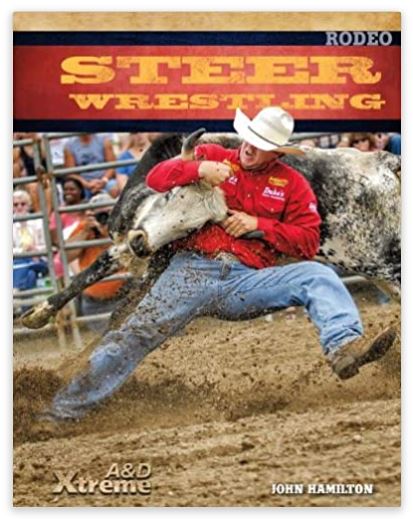
x
- Steer wrestling, also known as bulldogging, is a rodeo event where the rider jumps off his horse onto a Corriente steer and wrestles it to the ground by grabbing it by the horns. This is probably the single most physically dangerous event in rodeo for the cowboy, who runs a high risk of jumping off a running horse headfirst and missing the steer, or of having the thrown steer land on top of them, sometimes horns first. Steer wrestling, also known as bulldogging, is a rodeo event in which a horse-mounted rider chases a steer, drops from the horse to the steer, then wrestles the steer to the ground by grabbing its horns and pulling it off-balance so that it falls to the ground. The event carries a high risk of injury to the cowboy. There are some concerns from the animal rights community that the competition may include practices that constitute cruelty to animals, but the injury rate to animals is less than five-hundredths of one percent. A later PRCA survey of 60,971 animal performances at 198 rodeo performances and 73 sections of “slack” indicated 27 animals were injured, again approximately five-hundredths of 1 percent – 0.0004. Historically, steer wrestling was not a part of ranch life. The event originated in the 1890s and is claimed to have been started by an individual named Bill Pickett, a Wild West Show performer said to have caught a runaway steer by wrestling it to the ground. There are several versions of the story, some claiming that he developed the idea after he observed how cattle dogs worked with unruly animals.Rules of steer wrestling include: The bulldogger’s horse must not break the rope barrier in front of it at the beginning of a run but must wait for the animal escaping from the adjacent chute to release the rope. Breaking the rope barrier early adds a 10-second penalty to the bulldogger’s time. If the steer stumbles or falls before the bulldogger brings it down, he must either wait for it to rise or help it up before wrestling it to the ground. If the bulldogger completely misses the steer on his way down, he will receive a “no time”. Typical professional times will be in the range of 3.0 to 10 seconds from the gates opening to the waving of the flag. The steers used today are generally Corriente cattle or longhorns, which weigh between 450–650 pounds, and the human steer wrestlers typically weigh 180–300 pounds. While steer wrestlers have a lower injury rate than bull riders or bronc riders, their injury rate is higher than that of the speed events.
- x
x
- La lucha de novillos, también conocida como “bulldogging”, es un evento de rodeo en el que el jinete salta de su caballo a un novillo que corre y lo tira al suelo agarrándolo por los cuernos. Este es probablemente el evento físicamente más peligroso en el rodeo para el vaquero, que corre un alto riesgo de saltar de cabeza de un caballo corriendo y perder el novillo, o de que el novillo arrojado aterrice encima de ellos, a veces: cuernos primeros. La lucha de novillos, también conocida como bulldogging, es un evento de rodeo en el que un jinete montado en un caballo persigue a un novillo, cae del caballo al novillo, luego lucha contra el novillo al suelo agarrando sus cuernos y desequilibrándolo para que caiga al suelo. El evento conlleva un alto riesgo de lesiones para el vaquero. Hay algunas preocupaciones de la comunidad de derechos de los animales de que la competencia puede incluir prácticas que constituyen crueldad hacia los animales, pero la tasa de lesiones a los animales es inferior a cinco centésimas del uno por ciento. Una encuesta posterior de PRCA de 60,971 actuaciones de animales en 198 actuaciones de rodeo y 73 secciones de “holgura” indicó que 27 animales resultaron heridos, nuevamente aproximadamente quinientas de 1 por ciento – 0.0004. Históricamente, la lucha libre de novillos no era parte de la vida del rancho. El evento se originó en la década de 1890 y se afirma que fue iniciado por un individuo llamado Bill Pickett, un artista del Wild West Show que se dice que atrapó a un novillo fugitivo al luchar contra él en el suelo. Hay varias versiones de la historia, algunas afirman que desarrolló la idea después de observar cómo los perros de ganado trabajaban con animales rebeldes. Las reglas de la lucha de novillos incluyen: el caballo del bulldogger no debe romper la barrera de la cuerda frente a él al comienzo de una carrera, sino que debe esperar a que el animal que escapa del tobogán adyacente libere la cuerda. Romper la barrera de la cuerda temprano agrega una penalización de 10 segundos al tiempo del bulldogger. Si el novillo tropieza o cae antes de que el bulldogger lo derribe, debe esperar a que se levante o ayudarlo a levantarse antes de luchar contra él en el suelo. Si el bulldogger pierde por completo al novillo en su camino hacia abajo, recibirá un “no tiempo”. Los tiempos profesionales típicos estarán en el rango de 3.0 a 10 segundos desde la apertura de las puertas hasta el ondeo de la bandera. Los novillos utilizados hoy en día son generalmente ganado corriente o cuernos largos, que pesan entre 450 y 650 libras, y los luchadores de novillos humanos generalmente pesan entre 180 y 300 libras. Mientras que los luchadores de novillos tienen una tasa de lesiones más baja que los jinetes de toros o los jinetes de broncos, su tasa de lesiones es más alta que la de los eventos de velocidad.
x
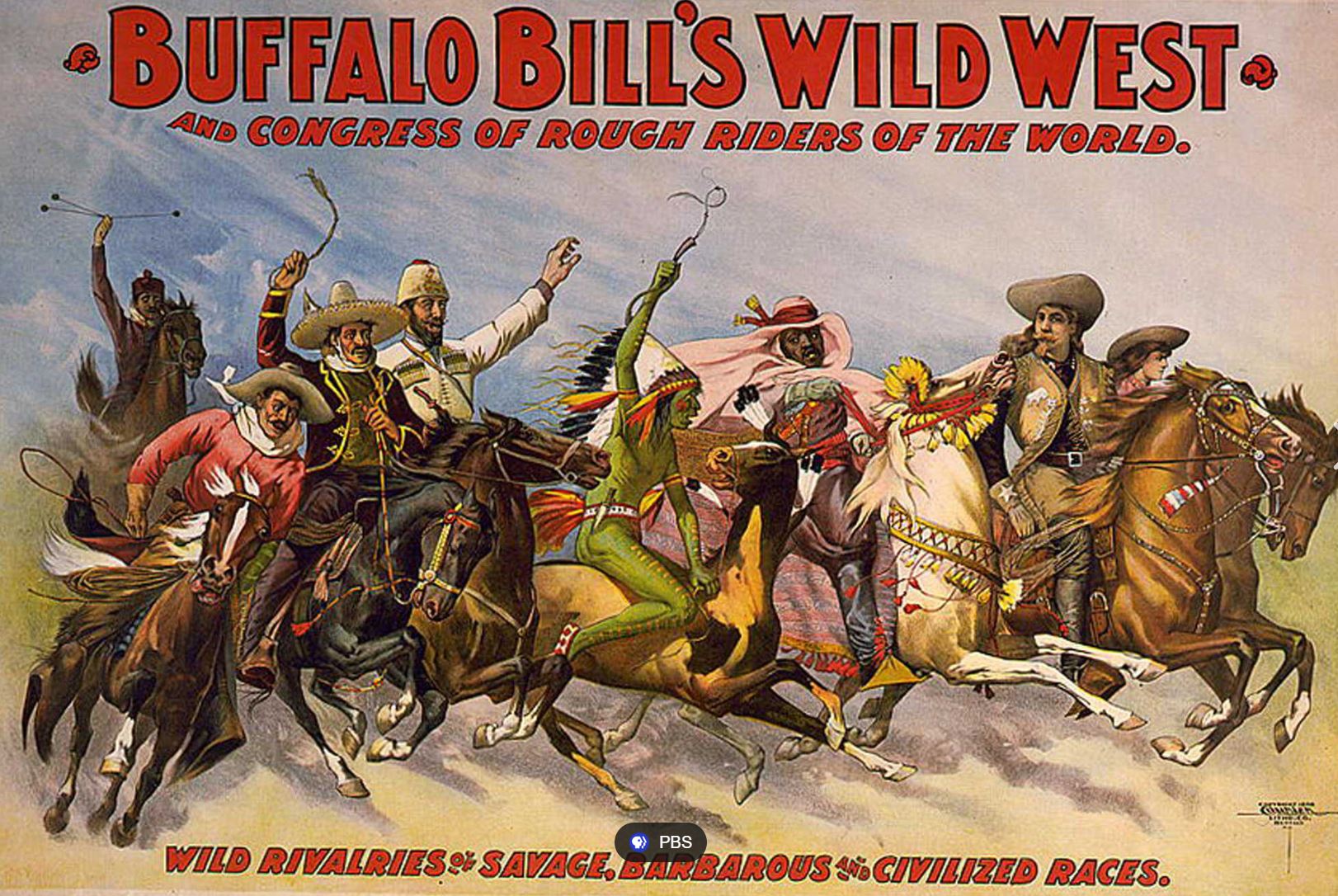
x
“Rough stock” competition
In spite of popular myth, most modern “broncs” are not in fact wild horses but are more commonly spoiled riding horses or horses bred specifically as bucking stock. Rough stock events also use at least two well-trained riding horses ridden by “pick up men” (or women), tasked with assisting fallen riders and helping successful riders get safely off the bucking animal.
x
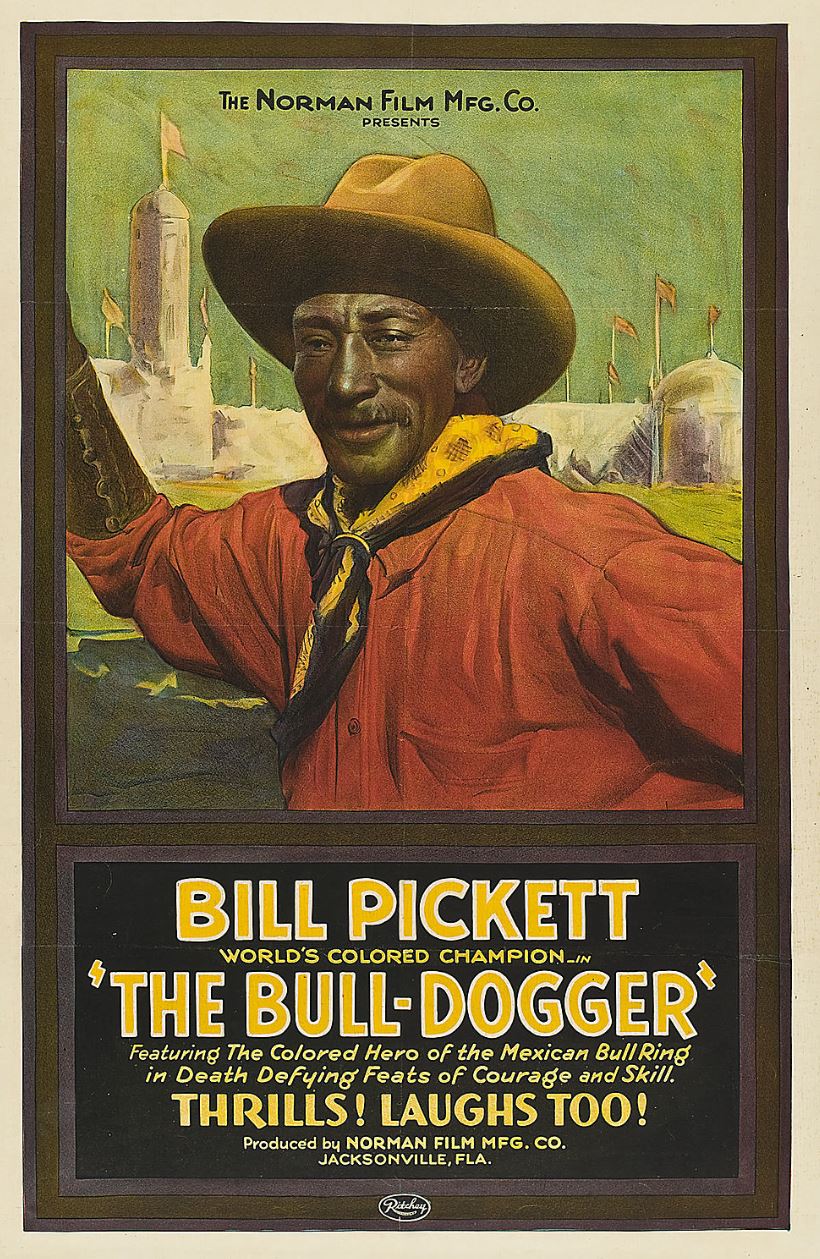
x
A pesar del mito popular, la mayoría de los “broncos” modernos no son de hecho caballos salvajes, sino que son más comúnmente caballos de montar o caballos criados específicamente como ganado para el corcoveo. Los eventos rudos también utilizan al menos dos caballos de equitación bien entrenados montados por “hombres recolectores” (o mujeres), con la tarea de ayudar a los jinetes caídos y ayudar a los jinetes exitosos a salir con seguridad del animal que se resiste.
- Bronc riding – there are two divisions in rodeo, bareback bronc riding, where the rider is only allowed to hang onto a bucking horse with a type of surcingle called a rigging; and saddle bronc riding, where the rider uses a specialized western saddle without a horn (for safety) and hangs onto a heavy lead rope, called a bronc rein, which is attached to a halter on the horse. Bronc riding, either bareback bronc or saddle bronc competition, is a rodeo event that involves a rodeo participant riding a bucking horse (sometimes called a bronc or bronco) that attempts to throw or buck off the rider. Originally based on the necessary buck breaking skills of a working cowboy, the event is now a highly stylized competition that utilizes horses that often are specially bred for strength, agility, and bucking ability. Each competitor climbs onto a horse, which is held in a small pipe or wooden enclosure called a bucking chute. When the rider is ready, the gate of the bucking chute is opened and the horse bursts out and begins to buck. The rider attempts to stay on the horse for eight seconds without touching the horse with their free hand. On the first jump out of the chute, the rider must “mark the horse out”. This means they must have the heels of their boots in contact with the horse above the point of the shoulders before the horse’s front legs hit the ground. A rider that manages to complete a ride is scored on a scale of 0–50 and the horse is also scored on a scale of 0–50. The ride as a whole is rated as the sum of these individual scores: scores in the 80s are considered very good, and in the 90s are considered exceptional. A horse who bucks in a spectacular and effective manner will score more points than a horse who bucks in a straight line with no significant changes of direction. Bareback bronc and saddle bronc styles are very different. In saddle bronc, the rider uses a specialized saddle with free-swinging stirrups and no horn. The saddle bronc rider grips a simple rein braided from cotton or polyester and attached to a leather halter worn by the horse. The rider lifts on the rein and attempts to find a rhythm with the animal by spurring forwards and backwards with their feet in a sweeping motion from shoulder to flank. The bareback rider does not use a saddle or rein but uses a rigging that consists of a leather and rawhide composite piece often compared to a suitcase handle attached to a surcingle and placed just behind the horse’s withers. The rider leans back and spurs with an up and down motion from the horse’s point of shoulder toward the rigging handle, spurring at each jump in rhythm with the motion of the horse.
- x
- x
- En la monta de “broncos” o caballos cerreros hay dos divisiones: la monta a pelo (sin montura), donde al jinete solo se le permite aferrarse a un caballo a un aparejo y la monta con silla de montar, donde el jinete usa una silla de montar occidental especializada sin cuerno (por seguridad) y se cuelga de una pesada cuerda de plomo, llamada rienda de broncos, que está unida al cabezal del caballo. La ela monta de “broncos”, ya sea a pelo o con silla de montar, es un evento de rodeo que involucra a un participante montando un caballo cerrero (a veces llamado “bronco” o “bronc”) que intenta arrojar o golpear al jinete. Originalmente basado en las habilidades necesarias del caballo para lanzar al suelo a un vaquero que trabaja, el evento es ahora una competencia altamente estilizada que utiliza caballos que a menudo son especialmente criados para la fuerza, la agilidad y la capacidad de resistencia. Cada competidor se sube a un caballo, que se sostiene en un pequeño recinto de madera llamado “tobogán de pandeo”. Cuando el jinete está listo, la puerta de la rampa se abre y el caballo estalla y comienza a corcovear. El jinete en la monta a pelo, intenta permanecer en el caballo durante ocho segundos sin tocar al caballo con su mano libre. En el primer salto fuera del tobogán, el jinete debe “marcar el caballo”. Esto significa que deben tener los talones de sus botas en contacto con el caballo por encima del punto de los hombros antes de que las patas delanteras del caballo golpeen el suelo. Un jinete que logra completar una monta se califica en una escala de 0 a 50 y el caballo también se califica en una escala de 0 a 50. La monta en su conjunto se califica como la suma de estas puntuaciones individuales: las puntuaciones en los 80 se consideran muy buenas, y en 90 se consideran excepcionales. Un caballo que se resiste de una manera espectacular y efectiva anotará más puntos que un caballo que se resiste en línea recta sin cambios significativos de dirección. Los estilos de monta a pelo y con monturas son muy diferentes. En la monta con silla, el jinete utiliza un sillín especializado con estribos de balanceo libre y sin cuerno. El jinete con silla de montar agarra una simple rienda trenzada de algodón o poliéster y unida a un cabezal de cuero usado por el caballo. El jinete levanta la rienda e intenta encontrar un ritmo con el animal estimulando hacia adelante y hacia atrás con los pies en un movimiento de barrido desde el hombro hasta el flanco. El jinete que monta a pelo no usa una silla de montar o rienda, sino que usa un aparejo que consiste en una pieza compuesta de cuero y cuero crudo a menudo comparada con un mango de maleta colocado justo detrás de la cruz del caballo. El jinete se inclina hacia atrás y estimula con un movimiento hacia arriba y hacia abajo desde el punto del hombro del caballo hacia el mango de aparejo, estimulando cada salto al ritmo del movimiento del caballo.
x
- x
- Bareback bronc riding began to develop as a professional rodeo sporting event around 1900. The riding equipment used during that era varied. In some cases, the rider simply held onto the horse’s mane, called a mane-hold. Others held a loose or twisted rope tied around the horse’s girth, and other methods involved using multiple handhold leather riggings based on a surcingle. In the early 1920s, when the old rodeo rules allowing two handed riding were being phased out and replaced with the newer rule of riding with one hand in the rigging and one hand in the air, Earl Bascom invented, designed and made rodeo’s first one-hand bareback rigging. The original one-handed rigging was made by Bascom from a section of rubber belting discarded from a threshing machine, with the entire rigging—the handhold and the body—all made as one piece. The handhold was folded back and riveted to the main body of the rigging, with a ‘D’ ring riveted on each side for tying the latigos. This rigging was first used at the Raymond Stampede in Alberta, Canada in July 1924. Bascom then refined the design, making his second one-handhold rigging out of leather and rawhide. Sole leather was used for the rigging body. Strips of leather, with rawhide sewed between, were used for the handhold with sheepskin glued under the handholds to protect the knuckles; this arrangement became known as “Bascom’s Rigging”. Honored in several Halls of Fame, Bascom is now known as the “Father of the Modern-day Bareback Rigging”. Variations of Bascom’s rigging are still used in rodeos today.
x
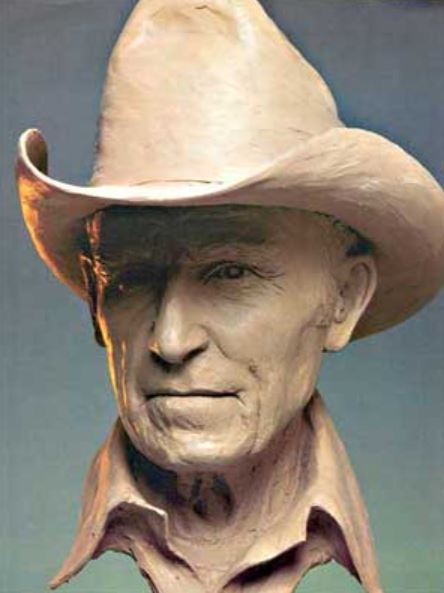
x
Earl Bascom
x
- La monta a pelo comenzó a desarrollarse como un evento deportivo de rodeo profesional alrededor de 1900. El equipo de equitación utilizado durante esa época varió. En algunos casos, el jinete simplemente se aferraba a la melena del caballo, llamada crin. Otros sostenían una cuerda suelta o retorcida atada alrededor de la circunferencia del caballo y otros métodos implicaban el uso de múltiples aparejos de cuero. A principios de la década de 1920, cuando las viejas reglas de rodeo que permitían montar a dos manos se estaban eliminando gradualmente y reemplazadas por la nueva regla de montar con una mano en el aparejo y una mano en el aire, EarlBascom inventó, diseñó e hizo el primer aparejo para la monta a pelo que utilizaba solamente una mano del vaquero o montador. El aparejo original para una sola mano fue hecho por Bascom a partir de una sección de correa de goma desechada de una trilladora, con todo el aparejo, el asidero y el cuerpo, todo hecho como una sola pieza. El asidero se dobló hacia atrás y se remachó al cuerpo principal del aparejo, con un anillo ‘D’ remachado a cada lado para atar los latigos. Este aparejo se utilizó por primera vez en la Estampida Raymond en Alberta, Canadá, en julio de 1924. Bascom luego refinó el diseño, haciendo su segundo aparejo de un solo asidero de cuero y cuero crudo. El cuero de la suela se utilizó para el cuerpo del aparejo. Se utilizaron tiras de cuero, con cuero crudo cosido entre ellos, para el asidero con piel de oveja pegada debajo de los asideros para proteger los nudillos; este arreglo se conoció como “Bascom’s Rigging”. Honrado en varios Salones de la Fama, Bascom es ahora conocido como el “Padre del Aparejo Bareback Moderno”. Las variaciones del aparejo de Bascom todavía se utilizan en los rodeos hoy en día.
- x
- Bull riding is an event where the cowboys ride full-grown bulls instead of horses. Although skills and equipment similar to those needed for bareback bronc riding are required, the event differs considerably from horse riding competition due to the danger involved. Because bulls are unpredictable and may attack a fallen rider, rodeo clowns, now known as “bullfighters”, work during bull-riding competition to distract the bulls and help prevent injury to competitors. American bull riding has been called “the most dangerous eight seconds in sports.” To receive a score, the rider must stay on top of the bull for eight seconds with the use of one hand gripped on a bull rope tied behind the bull’s forelegs. Touching the bull or themselves with the free hand, or failing to reach the eight-second mark, results in a no-score ride. Depending on the bull riding organization and the contest, up to four judges might judge the rider and four judge the bull on their performance. For most organizations, a perfect score is 100 points. In general, most professional riders score in the neighborhood of the mid-70s to the high 80s. Outside of the United States, bull riding traditions with varying rules and histories also exist in Canada, Mexico, Belize, Guatemala, El Salvador, Honduras, Nicaragua, Costa Rica, Panama, Cuba, the Dominican Republic, Colombia, Venezuela, Guyana, Ecuador, Peru, Bolivia, Brazil, Paraguay, Chile, Argentina, Uruguay, the Philippines, Japan, South Africa, England, Germany, France, Italy, Spain, Portugal, Australia and New Zealand with the majority of them following similar rules, especially with the Professional Bull Riders (PBR) organization.
x
x
- La monta de toros es un evento en el que los vaqueros montan toros adultos en lugar de caballos. Aunque se requieren habilidades y equipos similares a los necesarios para la monta a pelo de “broncos”, el evento difiere considerablemente de la competencia de equitación debido al peligro involucrado. Debido a que los toros son impredecibles y pueden atacar a un jinete caído, los payasos de rodeo, ahora conocidos como “toreros”, trabajan durante la competencia de monta de toros para distraer a los toros y ayudar a prevenir lesiones a los competidores. La monta de toros estadounidenses ha sido llamada “los ocho segundos más peligrosos en los deportes”. Para recibir una puntuación, el jinete debe permanecer encima del toro durante ocho segundos con el uso de una mano agarrada a una cuerda de toro atada detrás de las patas delanteras del animal. Tocar al toro o a sí mismos con la mano libre, o no alcanzar la marca de ocho segundos, resulta en una competencia sin puntuación. Dependiendo de la organización de la monta de toros y el concurso, hasta cuatro jueces pueden juzgar al jinete y cuatro juzgar al toro por su desempeño. Para la mayoría de las organizaciones, una puntuación perfecta es de 100 puntos. En general, la mayoría de los vaqueros profesionales puntúan en el vecindario de mediados de los 70 a los 80. Fuera de Estados Unidos, las tradiciones de monta de toros con diferentes reglas e historias también existen en Canadá, México, Belice, Guatemala, El Salvador, Honduras, Nicaragua, Costa Rica, Panamá, Cuba, República Dominicana, Colombia, Venezuela, Guyana, Ecuador, Perú, Bolivia, Brasil, Paraguay, Chile, Argentina, Uruguay, Filipinas, Japón, Sudáfrica, Inglaterra, Alemania, Francia, Italia, España, Portugal, Australia y Nueva Zelanda, con la mayoría de ellos siguiendo reglas similares, especialmente con la organización Professional Bull Riders (PBR).
- Each bull has a unique name and number (called a brand) used to help identify it. A sufficient number of bulls, each judged to be of good strength, health, agility, and age, are selected to perform. The rider and bull are matched randomly before the competition, although starting in 2008, some ranked riders are allowed to choose their own bulls from a bull draft for selected rounds in PBR events.
x
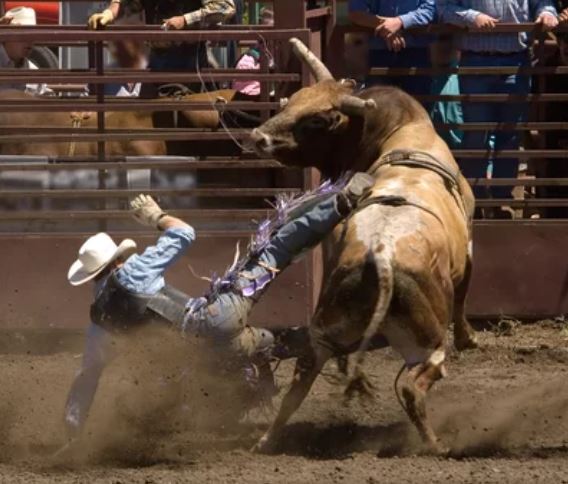
- x
- Cada toro tiene un nombre y un número únicos (llamados marca) utilizados para ayudar a identificarlo. Se selecciona un número suficiente de toros, cada uno juzgado como de buena fuerza, salud, agilidad y edad, para rendir adecuadamente. Los toros son sorteados al azar antes de la competencia, aunque a partir de 2008, algunos jinetes clasificados pueden elegir sus propios toros de un draft de toros para rondas seleccionadas en eventos de PBR.
- A rider mounts a bull and grips a flat braided rope. After they secure a good grip on the rope, the rider nods to signal they are ready. The bucking chute (a small enclosure which opens from the side) is opened and the bull storms out into the arena. The rider must attempt to stay on the bull for at least eight seconds, while only touching the bull with their riding hand. The other hand must remain free for the duration of the ride. Originally, the rules required a 10-second ride, but that was changed to the current eight seconds.
- Un jinete monta un toro y agarra una cuerda trenzada plana. Después de asegurar un buen agarre en la cuerda, el jinete asiente para indicar que están listos. El tobogán de pandeo (un pequeño recinto que se abre desde un lado) se abre y el toro irrumpe en la arena. El jinete debe intentar permanecer en el toro durante al menos ocho segundos, mientras que solo toca al toro con su mano de montar. La otra mano debe permanecer libre durante la duración la competencia. Originalmente, las reglas requerían una monta de 10 segundos, pero eso se cambió a los ocho segundos actuales.
- The bull bucks, rears, kicks, spins, and twists in an effort to throw the rider off. This continues for a number of seconds until the rider is bucked off of the bull or dismounts after completing the ride. A loud buzzer or whistle announces the completion of an eight-second ride.
- El toro se dobla, retrocede, patea, gira y gira en un esfuerzo por arrojar al jinete. Esto continúa durante varios segundos hasta que el jinete se despega del toro o se desmonta después de completar la competencia. Un fuerte timbre o silbato anuncia la finalización de los ocho segundos.
- Throughout the ride, bullfighters, also popularly known as rodeo clowns, stay near the bull to aid the rider if necessary. When the ride ends, either intentionally or not, the bullfighters distract the bull to protect the rider from harm.
- x
- x
- A lo largo de, los toreros, también conocidos popularmente como payasos de rodeo, permanecen cerca del toro para ayudar al jinete si es necesario. Cuando la monta termina, ya sea intencionalmente o no, los toreros distraen al toro para proteger al jinete de cualquier daño.
- Many competitions have a format that involves multiple rounds, sometimes called “go-rounds”. Generally, events span two to three nights. The rider is given a chance to ride one bull per night. The total points scored by the end of the event are recorded, and after the first or first two go-rounds, the top 20 riders are given a chance to ride one more bull. This final round is called the “short go” or sometimes it is called the championship round. After the end of the short go, the rider with the most total points wins the event.
- Muchas competiciones tienen un formato que implica múltiples rondas, a veces llamadas “rondas de ida”. En general, los eventos abarcan de dos a tres noches. Cada jinete tiene la oportunidad de montar un toro por noche. Los puntos totales anotados al final del evento se registran y después de la primera o las dos primeras rondas, los 20 mejores jinetes tienen la oportunidad de montar un toro más. Esta ronda final se llama “short go” o a veces se llama “ronda de campeonato”. Después del final del corto recorrido, el participante con más puntos totales gana el evento.
- Scoring is done consistently within a rodeo organization. The two largest sanctioning bodies are the PRCA and PBR. They vary slightly in how they score bull rides. There are many other organizations, and each has its own particular rules on how they score, but most follow rules similar to the PRCA. The rider only scores points if he successfully rides the bull for 8 seconds. The bull is always given a score. In the PRCA, a ride is scored from 0–100 points. Both the rider and the bull are awarded points. In the regular season, there are four judges, two judges scoring the bull’s effort from 0–25 points, and two judges scoring the rider’s performance from 0-25 points. There is the potential for the rider and the bull to earn up to 50 points each. The two scores are added together for a total ride score of up to 100 points. This system was spearheaded by former PRCA president Dale Smith. Scores of zero are quite common, as many riders lose control of the animal almost immediately after the bull leaves the bucking chute. Many experienced professionals are able to earn scores of 75 or more. Scores above 80 are considered excellent, and a score in the 90s exceptional.
x
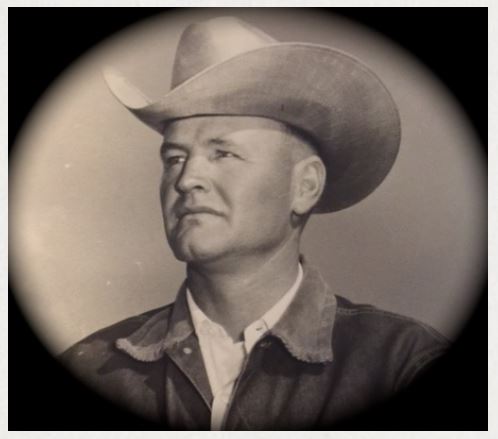
x
Dale Smith
x
- La puntuación se realiza de manera consistente dentro de una organización de rodeo. Los dos mayores órganos sancionadores son el PRCA y el PBR. Varían ligeramente en la forma en que puntúan las competencias de montas de toros. Hay muchas otras organizaciones y cada una tiene sus propias reglas particulares sobre cómo puntúan, pero la mayoría sigue reglas similares a la PRCA. El jinete solo suma puntos si monta con éxito el toro durante 8 segundos. Al toro siempre se le da una puntuación. En la PRCA, una monta se puntúa de 0 a 100 puntos. Tanto el jinete como el toro reciben puntos. En la temporada regular, hay cuatro jueces, dos jueces que califican el esfuerzo del toro de 0 a 25 puntos y dos jueces que califican el rendimiento del jinete de 0 a 25 puntos. Existe la posibilidad de que el jinete y el toro ganen hasta 50 puntos cada uno. Los dos puntajes se suman para un puntaje total de montas de hasta 100 puntos. Este sistema fue encabezado por el ex presidente de PRCA Dale Smith. Las puntuaciones de cero son bastante comunes, ya que muchos jinetes pierden el control del animal casi inmediatamente después de que el toro abandona el encierre. Muchos profesionales experimentados pueden obtener puntajes de 75 o más. Las puntuaciones por encima de 80 se consideran excelentes y una puntuación en los 90: excepcional.
- In the PBR, a ride is scored from 0-100 points in total. Up to 50 points is scored for the rider and 50 points for the bull. The rider only scores points if he successfully rides the bull for 8 seconds. The bull is always given a score. Four judges award a score of up to 25 points each for the rider’s performance, and four judges award up to 25 points each for the bull’s effort. Then all the scores are combined and then the total is divided in half for the official score.
- En el PBR, una monta se puntúa de 0 a 100 puntos en total. Se anotan hasta 50 puntos para el jinete y 50 puntos para el toro. El jinete solo suma puntos si monta con éxito el toro durante 8 segundos. Al toro siempre se le da una puntuación. Cuatro jueces otorgan una puntuación de hasta 25 puntos cada uno por el rendimiento del jinete y cuatro jueces otorgan hasta 25 puntos cada uno por el esfuerzo del toro. Luego se combinan todos los puntajes y luego el total se divide por la mitad para el puntaje oficial.
- Judges award points based on several key aspects of the ride. Bull riding rules require for judges to be former bull riders themselves. They look for constant control and rhythm in the rider in matching their movements with the bull. Points are usually deducted if a rider is constantly off balance. For points actually to be awarded, the rider must stay mounted for a minimum of 8 seconds, and they are scored only for actions during those 8 seconds. The ability to control the bull well allows riders to gain extra style points. These are often gained by spurring the animal. A rider is disqualified for touching the bull, the rope, or themself with their free arm.
- x
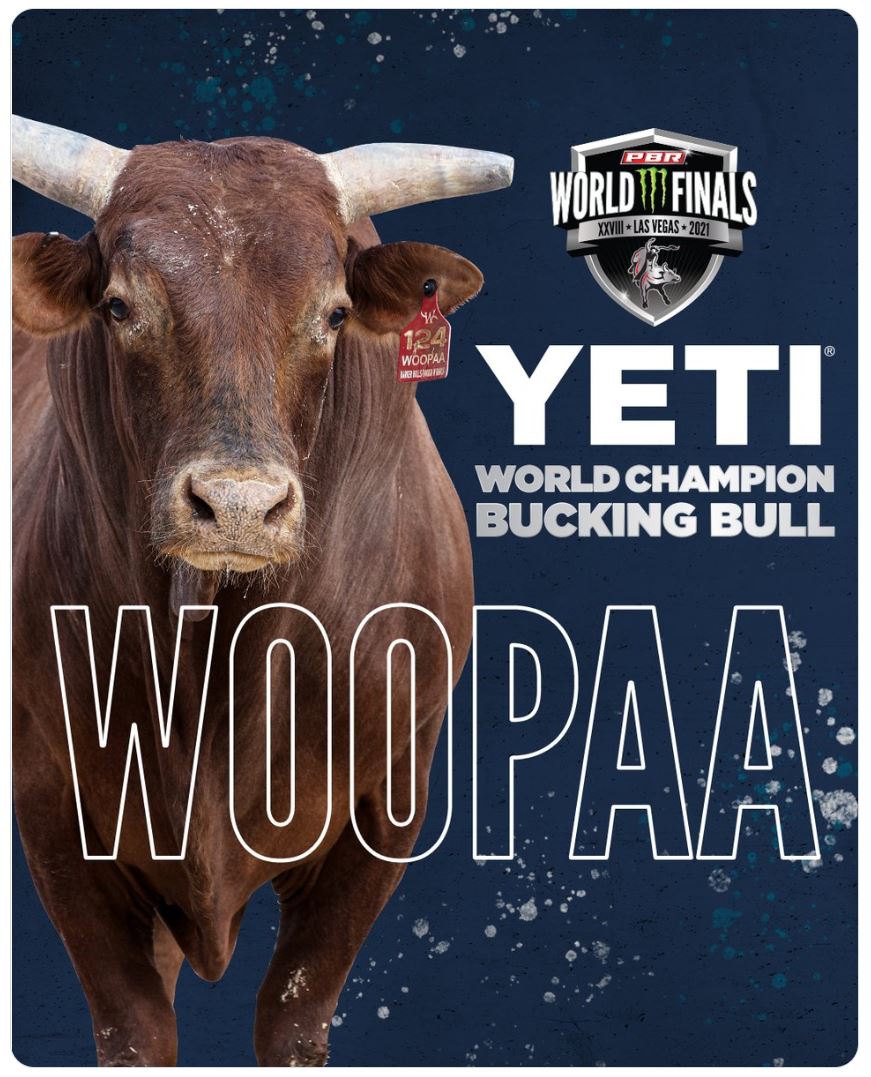
x
“Woopaa”, best rodeo bull of 2021
x
- Los jueces otorgan puntos en función de varios aspectos clave de la monta. Las reglas de monta de toros requieren que los jueces sean ex jinetes de toros. Buscan un control y ritmo constante en el jinete para hacer coincidir sus movimientos con el toro. Los puntos generalmente se deducen si un participante está constantemente desequilibrado. Para que los puntos realmente se otorguen, el vaquero debe permanecer montado durante un mínimo de 8 segundos y se puntúan solo por las acciones durante esos 8 segundos. La capacidad de controlar bien al toro permite a los jinetes ganar puntos de estilo adicionales. Estos a menudo se obtienen estimulando al animal. Un jinete es descalificado por tocar al toro, la cuerda o a sí mismo con su brazo libre.
- Bulls have more raw power and a different style of movement from bucking horses. One move particular to bulls is a belly roll (“sun fishing”), in which the bull is completely off the ground and kicks either his hind feet or all four feet to the side in a twisting, rolling motion. Bulls also are more likely than horses to spin in tight, quick circles, and are less likely to run or to jump extremely high (“break in two”).
- Los toros tienen más fuerza bruta y un estilo de movimiento diferente al de los caballos. Un movimiento particular de los toros es un rollo de vientre (“pesca al sol”), en el que el toro está completamente fuera del suelo y patea sus patas traseras o los cuatro pies hacia un lado en un movimiento de torsión y rodadura. Los toros también son más propensos que los caballos a girar en círculos apretados y rápidos y son menos propensos a correr o saltar extremadamente alto (“romper en dos”).
- For the bull, judges look at the animal’s overall agility, power and speed, his back legs kick, and his front-end drops. In general, if a bull gives a rider a very hard time, more points will be awarded. If a rider fails to stay mounted for at least 8 seconds, the bull is still awarded a score.The PBR and PRCA record bulls’ past scores so that the best bulls can be brought to the finals, ensuring that riders will be given a chance to score highly. Both organizations award one bull an award for the best bull of the year, decided by bull scores in both buck offs and successful qualified rides. The award brings prestige to the ranch at which the bull was raised.
- x
- x
- Los jueces observan la agilidad general, la potencia y la velocidad del toro, còmo sus patas traseras patean y sus caídas frontales. En general, si un toro le da a un jinete un momento muy difícil, se otorgarán más puntos. Si un jinete no puede permanecer montado durante al menos 8 segundos, el toro aún recibe una puntuación. El PBR y la PRCA registran los puntajes pasados de los toros para que los mejores toros puedan ser llevados a las finales, asegurando que los jinetes tengan la oportunidad de obtener una puntuación alta. Ambas organizaciones otorgan a un toro un premio al mejor toro del año, decidido por los puntajes de los toros tanto en los buck offs como en los paseos calificados exitosos. El premio aporta prestigio a la ganadería en la que se crió el toro.
- If a rider scores sufficiently low due to poor bull performance, the judges may offer the rider the option of a re-ride. By taking the option, the rider gives up the score received, waits until all other riders have ridden, and rides again. This can be risky because the rider loses their score and risks being bucked off and receiving no score. A re-ride may also be given if a bull stumbles or runs into the fence or gate.
- x
- x
- Bull rider Mason Lowe of Missouri, died on Jul 2019 in a Denver Coliseum rodeo.
- x
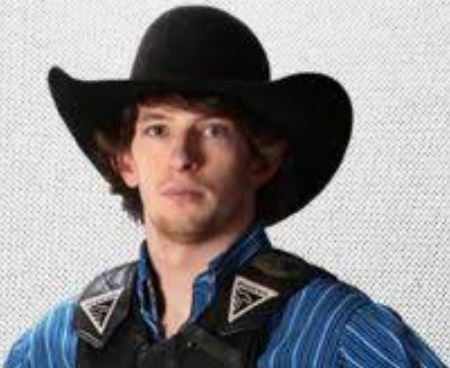
- x
- Mason Lowe
- x
- Si un jinete obtiene una puntuación lo suficientemente baja debido al bajo rendimiento del toro, los jueces pueden ofrecerle la opción de una nueva oportunidad. Al tomar la opción, el vaquero renuncia a la puntuación recibida, espera hasta que todos los demás participantese hayan montado y vuelve a montar. Esto puede ser arriesgado porque el participante en cuestiòn pierde su puntaje y corre el riesgo de ser rechazado y no recibir puntaje. También se le puede dar una nueva oportunidad si un toro tropieza o se estrella con la cerca o la puerta.
- In some PBR events that use an elimination style bracket, if both riders in a bracket fail to reach eight seconds, the rider who lasts longer advances to the next round. Otherwise, the rider with a higher score advances.
- En algunos eventos de PBR que utilizan un soporte de estilo de eliminación, si ambos competidores en un grupo no logran alcanzar los ocho segundos, el vaquero que dure más tiempo avanza a la siguiente ronda. De lo contrario, el jinete con una puntuación más alta avanza.
Index
| 1st Street Restaurante de Deer Park …..Eating Prime Ribs …..Mark & the story of the Bread Board …..Hay bales …..Hay roles …..Harold Weger | ||||||||||||||||||||||||||
| ||||||||||||||||||||||||||
Index of our trips |


